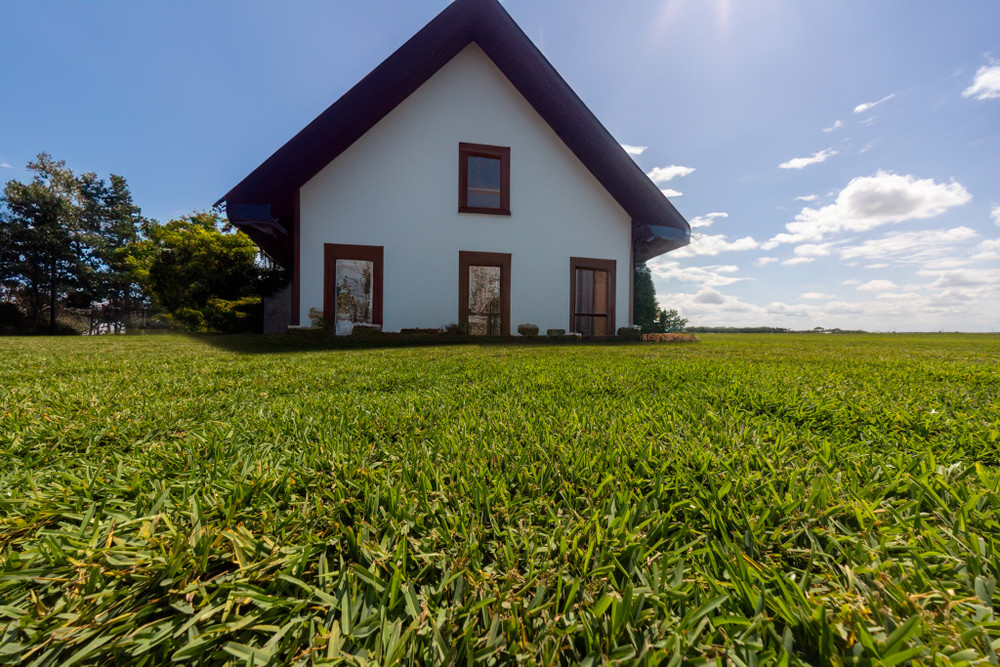St. Augustine Grass: A Complete Homeowner’s Guide
Posted by Farm2Yard on Aug 13th 2025
St. Augustine Grass: A Complete Homeowner’s Guide
If you live in the warm, humid parts of the southern United States, you’ve probably seen St. Augustine grass — and maybe even walked barefoot across its thick, lush blades. This broad-leaf turfgrass is one of the most recognizable warm-season lawns, especially in Florida, Texas, and other Gulf Coast states. Known for its vibrant color, soft feel, and ability to thrive where other grasses struggle, St. Augustine remains a popular choice for homeowners who want an attractive lawn with moderate upkeep.
Below, we’ll cover its history, characteristics, benefits, varieties, and care tips — with expert insight from Jeff Hill, CEO of USA Sod.
A Brief History
St. Augustine grass (Stenotaphrum secundatum) is native to coastal regions in the Gulf of Mexico, the Caribbean, West Africa, and the Mediterranean (Wikipedia). It’s been documented in the U.S. since at least the early 1800s and rose to popularity in the Southeast thanks to its heat tolerance, salt tolerance, and rapid spread via stolons (above-ground runners) (Texas A&M AgriLife Extension).
Early plantings were mostly grown from naturally occurring coastal stands, but modern cultivars like Floratam, Palmetto, Raleigh, CitraBlue, and ProVista were developed to improve pest resistance, shade tolerance, and mowing frequency (University of Florida IFAS Extension).
Key Characteristics
Jeff Hill describes St. Augustine as “the most common sod we see in the far South… a wide-blade grass that doesn’t root real deep.” Its main traits include:
-
Blade Width: Broad, coarse texture (4–10 mm wide) for a dense canopy (Clemson Cooperative Extension).
-
Color: Rich blue-green, with certain cultivars showing bluish or reddish tints (Grounds Guys).
-
Growth Habit: Spreads rapidly through stolons, filling bare spots quickly (UC IPM).
-
Climate Preference: Thrives in USDA Zones 8–10, ideally 80–100°F (Texas A&M AgriLife Extension).
-
Shade Tolerance: More shade-tolerant than Bermuda, but less so than some Zoysias (University of Florida IFAS Extension).
Popular Varieties
St. Augustine isn’t one-size-fits-all — different varieties offer unique advantages:
-
Floratam: Developed by the University of Florida and Texas A&M; good pest resistance and heat tolerance (UF IFAS).
-
Palmetto: Excellent shade tolerance, ideal for yards with tree cover (Hill notes it “grows wonderfully” under trees).
-
Raleigh: Cold-tolerant option for northern edges of its range (Clemson Extension).
-
CitraBlue: Deeper blue-green color, improved disease resistance (UF IFAS).
-
ProVista: A Scotts Turf variety resistant to glyphosate (Roundup) and engineered for slower growth, reducing mowing frequency (Grounds Guys).
-
Seville: A dwarf variety with finer blades and good shade tolerance (UC IPM).
According to Hill, “Most homeowners couldn’t tell the varieties apart by sight — the differences are in where they grow best and how they perform.”
Benefits for Homeowners
1. Thrives in Coastal & Warm Environments
Its natural salt tolerance and ability to handle sandy soils make it perfect for coastal yards (Texas A&M AgriLife Extension).
2. Quick Establishment
Sold mainly as sod or plugs (not seed), St. Augustine fills in fast, reducing erosion and giving you instant green curb appeal (UF IFAS).
3. Soft & Inviting
Despite its coarse blades, it feels plush underfoot — great for barefoot walks, kids, and pets (Grounds Guys).
4. Low to Medium Maintenance
Hill calls it a “set it and forget it” lawn — mow weekly, fertilize properly, and apply pre-emergents to keep weeds out.
5. Natural Weed Suppression
Its thick growth shades the soil, helping block weed germination (UC IPM).
Drawbacks to Consider
-
Wear Tolerance: Not ideal for heavy foot traffic or sports play (Clemson Extension).
-
Pest Susceptibility: Chinch bugs are a common threat, requiring preventive treatment (UC IPM).
-
Thatch Buildup: Can develop thatch quickly without periodic aeration or dethatching (UF IFAS).
-
Cold Sensitivity: Browns out in frost and may suffer winterkill in colder zones (Texas A&M AgriLife Extension).
Maintenance Tips
1. Mowing
-
Maintain a height of 2.5–4 inches (shorter for dwarf types like Seville) (Clemson Extension).
-
Avoid removing more than one-third of the blade at a time.
Hill notes it’s “easy to mow and edge” because of its shallower roots.
2. Watering
-
Needs ~1 inch of water per week during active growth (UF IFAS).
-
Water deeply and infrequently to encourage deeper rooting.
3. Fertilizing
-
Apply 2–4 balanced fertilizer treatments between late spring and early fall (Texas A&M AgriLife Extension).
-
Avoid excessive nitrogen to reduce thatch and disease pressure (UC IPM).
4. Pest & Disease Control
-
Use pre-emergent herbicides to prevent weeds (Grounds Guys).
-
Watch for chinch bugs and treat promptly if spotted (UC IPM).
-
Avoid overwatering to prevent fungal diseases like gray leaf spot (Clemson Extension).
5. Thatch Management
-
Aerate or dethatch every 2–3 years to improve air, water, and nutrient flow (UF IFAS).
6. Shade Strategy
-
If heavy shade is present, choose shade-tolerant cultivars like Palmetto (Grounds Guys).
Ideal Use Cases
Hill advises against using St. Augustine on sports fields or high-wear areas. Instead, it’s perfect for:
-
Residential front and backyards with moderate traffic.
-
Coastal properties exposed to salt spray.
-
Yards with partial shade (variety-dependent).
-
Homeowners who want a lush look without intensive upkeep.
Final Thoughts
St. Augustine grass delivers the dense, green, welcoming look many southern homeowners love. With the right variety and maintenance, it can handle sun, shade, and coastal conditions with ease. But remember — it’s not built for heavy wear, and pest prevention is key.
As Jeff Hill sums it up: “If you’re a DIYer who wants to mow once a week and edge every other week, St. Augustine’s a great option.”

